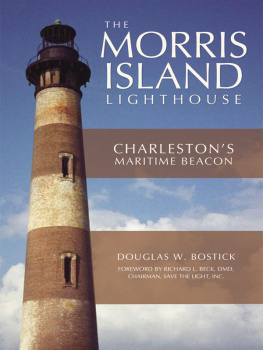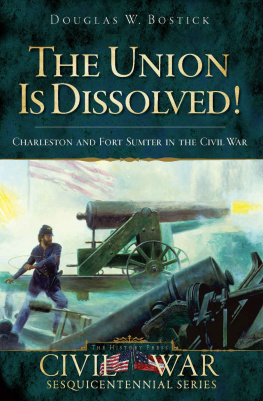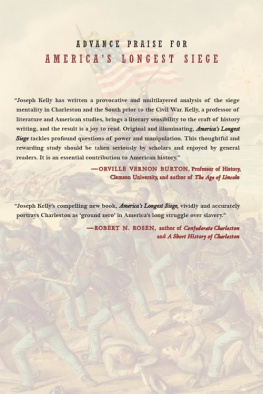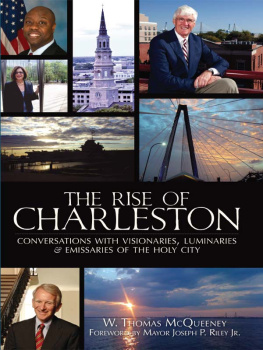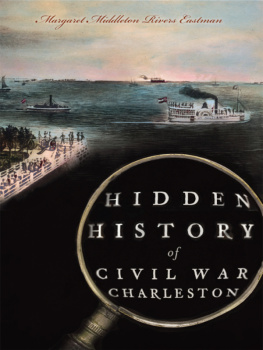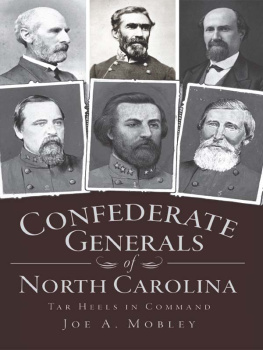C HARLESTON U NDER S IEGE

T HE I MPREGNABLE C ITY
D OUGLAS W. B OSTICK

Published by The History Press
Charleston, SC 29403
www.historypress.net
Copyright 2010 by Douglas W. Bostick
All rights reserved
Cover image: Currier and Ives print of the ill-fated ironclad attack on Fort Sumter,
April 7, 1863. Courtesy of the Library of Congress.
First published 2010
e-book edition 2011
ISBN 978.1.61423.034.2
Library of Congress Cataloging-in-Publication Data
Bostick, Douglas W.
Charleston under siege : the impregnable city / Douglas W. Bostick.
p. cm.
Includes bibliographical references and index.
print edition: ISBN 978-1-59629-757-9
1. Charleston (S.C.)--History--Civil War, 1861-1865. 2. Charleston (S.C.)--History--Siege,
1863. I. Title.
E470.65.B73 2010
975.791503--dc22
2010044803
Notice: The information in this book is true and complete to the best of our knowledge. It is offered without guarantee on the part of the author or The History Press. The author and The History Press disclaim all liability in connection with the use of this book.
All rights reserved. No part of this book may be reproduced or transmitted in any form whatsoever without prior written permission from the publisher except in the case of brief quotations embodied in critical articles and reviews.
This book is dedicated to my son, Taylor. Though not always wanting to admit it to his dad, he loves the many stories of the history of the South Carolina Lowcountry. He encourages me in my pursuit as a writer. Just when I take what I do too seriously, he makes me laugh and keeps me focused on my most important jobbeing a father.
C ONTENTS
A CKNOWLEDGEMENTS
The story of the Siege of Charleston is often lost in the shadow of the drama of the first shot on April 12, 1861, that started the Civil War. The 1989 movie Glory showcased the July 18, 1863 attack on Battery Wagner. The world watched as the H.L. Hunley was located and recovered from Charleston Harbor, reminding us all of the first successful attack on an enemy warship by a submarine. These stories, however, are only pieces of the greater storythe longest siege of the Civil War.
I am indebted to writers and historians who preceded me in preserving the great tales of the defense of Charleston. Skipper Keith has been an incredible resource to many writers, myself included. Though he completed a successful career with the South Carolina Department of Natural Resources, I know of no one more knowledgeable about the Civil War in the South Carolina Lowcountry. Rick Hatcher, historian at Fort Sumter National Monument, has always graciously fielded my questions and offered his critique.
I am also indebted to my family for their understanding, encouragement and support. They tolerate many hours that I am locked away in my office, staring at my computer monitor, trying to figure out the perfect wording. Just when I think they are not paying attention to my stories of local history, they respond with a nugget during an after-dinner game of Bostick family trivia.
Most of all, I am overwhelmed in my admiration for the men, Confederate and Union, who answered the call of their countries. Their bravery and selflessness are awe inspiring.
1
G REAT T ERROR P REVAILING
It was almost 4:30 p.m. on April 14, 1861, when, after withstanding an intense bombardment, Major Robert Anderson and his beleaguered garrison marched out of Fort Sumter to the tune of Yankee Doodle, followed by Hail to the Chief, thus ending the first chapter of a four-year-long civil war. Later that evening in Charleston, South Carolina governor Francis Pickens made a speech from the balcony of the Charleston Hotel in which he declared:
We have defeated their twenty millions. We have humbled the flag of the United States before the Palmetto and Confederate, and so long as I have the honor to preside as your chief magistrate, so help me God, there is no power on earth shall ever lower from that fortress those flags, unless they be lowered and trailed in a sea of blood. I can here say to you it is the first time in the history of this country that the stars and stripes have been humbled. That flag has never before been lowered before any nation on this earth. But today it has been humbled and humbled before the glorious little State of South Carolina.
On April 15, 1861, U.S. president Abraham Lincoln issued a proclamation calling for seventy-five thousand troops to re-possess the forts, places, and property which have been seized from the Union. He also called for both houses of Congress to convene on July 4 to consider and determine, such measures, as, in their wisdom, the public safety, and interest may seem to demand.

Illustration of the firing on Fort Sumter, April 12, 1861, published in Harpers Weekly. Authors collection.

Harpers Weekly engraving of the Confederate flag now flying over Fort Sumter, April 15, 1861, after the evacuation of the Federal garrison. Authors collection.
On April 19, 1861, Lincoln ordered the blockade of all Southern ports from South Carolina to Texas. The next day, the Gosport Navy Yard at Norfolk was captured by the Confederacy. William Mahone, president of the Norfolk and Petersburg Railroad, tricked the Union troops at Gosport into evacuation. He bluffed the Union command by running a passenger train in and out of Norfolk, repeatedly blowing the whistle, leaving the Northerners with the impression that a large Confederate force was assembling for an attack. The Union troops withdrew to Fort Monroe at Hampton Roads, and the Confederacy seized the Gosport Navy Yard, the largest shipyard and logistical base of the U.S. Navy. At the navy yard, the Confederates also seized more than $8 million in property, including three thousand pieces of ordnance, among them Dahlgren guns, the navys latest and most modern naval weapon.
Charleston was a point of immediate attention for the Union ships moving to form the blockade. Not only was it the cradle of secession, but also its proximity to Bermuda (780 miles) and Nassau (500 miles) made the South Carolina port a key connection for blockade runners. Once goods reached Charleston, its strategic railroad connections allowed vital supplies to be distributed throughout the South. The goal of the blockade, quite simply, was to prevent cotton from leaving the port and finished goods, food and military supplies from entering the port, thus choking off Charleston and the Confederacy.
On May 11, 1861, the steam frigate USS Niagara was the first ship to arrive at the mouth of Charleston Harbor to initiate the blockade. The warship was one of the fastest ships in the U.S. Navy and was heavily armed with nine guns. However, with a deep draft of twenty-four feet, the blockading frigate could only cover the main channel, leaving three other shallower harbor entrances open.
The Niagara had visited Charleston previously when a slave trader, the


